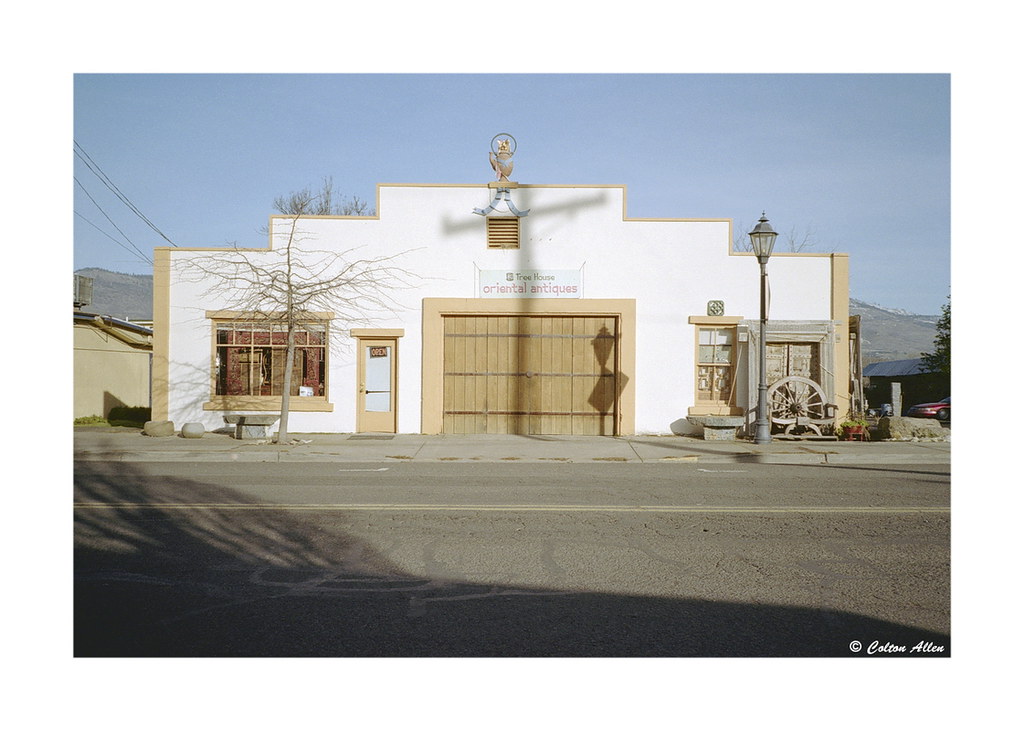 Originally posted by pentageek
Originally posted by pentageek 
I think this is the problem with scanning. Recently I have started to 'scan' film with DSLR, and I have not found yet simple method of post-processing of colour negative - ordinary reversal of colour gives low contrast and colours which are definitely off, just like in your example. Playing with tonal curves helps a lot, but this is pretty tedious task which rarely allows for batch processing. Nevertheless, I don't give up

I have also seen a few shots where the white balance is off, in this image below, I adjusted the Temp by -17 blacks by -77 and whites by +46 and -0.24ev. Scanning sounds a likely cause. The second image is as scanned.
 Originally posted by aaacb
Originally posted by aaacb 
Kodak gold 200 isn't the best film out there, but it's definitely not that bad either. It lacks color accuracy in light that's not bright sunlight, but has decent contrast in my experience.
Does the negative look ok? You should be able to see clear detail etc and it shouldn't be washed out. If not, there's not much you can do to recover an image, otherwise try scanning it elsewhere.
With the super program/super A it's easy to forget setting the iso dial right (tiny text) and having exposure comp off (easy to move). Those would be my first two guesses, from personal experience with that camera. If the entire roll looks bad in the same way (not just this image) and you don't suspect incorrect settings, then maybe the meter is off. Of course, maybe the lab messed it up, but I think that's the least likely explanation.
Most shots have this defect to some degree and a few are not bad, and I think the meter is OK, it's had a CLA and I have checked it against my K-50, so scanning may well be at fault. I have yet to examine the negatives, and I have no experience of doings so. It will be hard for me to tell if they are good or bad.
I should add, I used a hood in all cases and have not used any filters.
 Originally posted by photoptimist
Originally posted by photoptimist 
It could be anything: expired film, inaccurate aging meter, aging aperture mechanism, aging shutter mechanism, bad chemicals, or bad scanning.
How do the negatives look? And is there any pattern to some frames seeming under- or over-exposed that seems to depend on the aperture or shutter speed?
The film is fresh stock. I send three rolls in at a time, and the first set of three were expired Kodak Gold and came out even worse (same lab) so I put those down to the film expiry at the time.
The prints look like the scans as well, I would assume then the print is made from a scanned image and not through an enlarger.
 Originally posted by Swift1
Originally posted by Swift1 
What you are seeing is just from poor scanning.
I would imagine that 20+ years ago nearly every lab employed a properly trained professional that would be in charge of scanning and/or printing. The industry depended on labs providing good, consistent results.
Nowadays, film is a novelty. Most labs will just run the film through their scanner using the simplest automatic settings.
I really recommend getting your own scanner and taking the time to properly learn scanning.
Thanks, i now have an excuse to get a 50mm Macro

All,
The scanning theme here is quite likely I feel. My next set of films will go to a different lab and that will be a clincher. I can't tell at this point if the development is off or not, perhaps I can revisit the negs another time to improve them. Home scanning is not something I envisaged doing, but hey I know I have 30 years worth of negs around in a box somewhere



 Similar Threads
Similar Threads 










 .
.



 Post #5 by Swift1
Post #5 by Swift1








